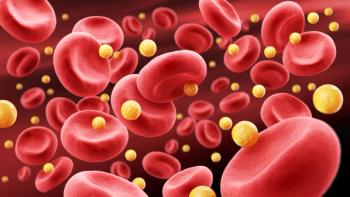
ASHP Midyear: Pharmacy Compounding Requires Ensuring Quality, Safety, and Preparedness
Daily operational tasks and quality assurance measures in pharmacy compounding ensures patient safety and maintains compliance.
Annie Lambert, PharmD, BCSCP, clinical program manager of compliance solutions at Wolters Kluwer, emphasizes the multifaceted nature of pharmacy compounding and the need for meticulous attention to daily operational tasks, quality assurance, and preparedness. Lambert stresses the significance of documenting and auditing all cleaning, monitoring, and periodic requirements to maintain compliance and accountability. Beyond the day-to-day activities, she covers the impact of drug shortages on compounding needs and the importance of being proactive in responding to such fluctuations. Importantly, she highlights the critical role of quality assurance programs in ensuring patient safety, including sterility testing, release inspections, and comprehensive environmental monitoring.
Pharmacy Times: How do USP and standards impact the daily operations of a compounding pharmacy?
Annie Lambert: They really impact every day when that's whether you make one compounded preparation or hundreds at a time. You have to do the same things. There's a lot of cleaning tasks. There are a lot of monitoring tasks, and then beyond those daily things, there are some weekly requirements, some monthly requirements, some additional quarterly requirements. So it's really important to keep track of all of those things is one important thing, and to make sure that your your staff, if you're a manager, are getting those things done, and so having some tools to help make sure that those things get documented is important. It's really the day to day. Then I would be remiss if I didn't address drug shortages and how that impacts compounding, often requiring additional compounding to meet the needs when drug shortages occur, and so that can really kind of ebb and flow over timeas drug shortages ebb and flow themselves, but also trying to be prepared and react to whatever is coming up. Then, of course, compounding is when an inspector or a surveyor comes that sort of sets whatever you're going to do for that day, and so being able to prove that you have done all those things, daily, weekly, monthly, etc, is really the part of being ready for whenever that's going to happen. So every day compounding is important.
Pharmacy Times: How can pharmacists implement quality assurance and quality control measures to ensure the accuracy, sterility, and potency of compounded preparations?
Lambert: So many ways that's so important. Every compounded, sterile preparation that we prepare, that we handle, we really have that patient safety, who is going to get that at the end of all of the efforts that we do. So that quality assurance program and those quality control measures are really helping validate all of those things that we do to make sure that that dose is safe and sterile and ready. So some of those examples could be auditing all those things that we just talked about, in terms of those daily operational tasks, making also sure that your staff is trained and competent. Those are some of the foundational things, and then looking really back, depending on what type of compounding that you're doing, also looking at your sterility, testing your release, inspection results, lots of different required tests, but then looking at those kind of in total. I think, as pharmacists, sometimes we tend to get focused a little too much on one product, one task, one part of it. I think it's really important to kind of zoom out a little bit as a quality program and look at the whole and how those things are relating to each other. Maybe you have a finding of an above-action level finding in an area in your clean room, and of course, that's you're going to look at your cleaning tasks. You're going to look at the competency of that person, et cetera. So that would be a more reactive corrective action, but from a preventative action perspective, you could take a finished preparation that you have made and kind of work backwards and see who made that? What hood was it made in? When was that last clean? When was that hood last certified? So just really using that as an almost reverse tracer to verify all of the aspects that were involved in making that preparation, and then see how all of that works together. I think you can also do the same thing with your results, your different types of environmental monitoring results, whether that's temper, pressure and humidity, and then your air and surface sampling, and then also coordinating that with looking at what results you're finding in your personnel sampling with their competencies. And so maybe there's some commonalities that you can see there. You can also look at the greater results as part of your your facility, certification, your particle counts, your air changes, and look for trends there. So you can really start with a specific thing and then kind of work back out to see make sure all those elements are met, how those requirements are met, but then I think looking for trends to see where maybe some other things that you then can go backwards or the other way, and dive deep after you see where those those trends are.
Newsletter
Stay informed on drug updates, treatment guidelines, and pharmacy practice trends—subscribe to Pharmacy Times for weekly clinical insights.


















































































































































































































